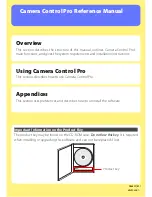
How True Page Works
Using True Page 194
True Page With Frames
The best way for True Page to preserve side-by-side columns is to create
frames around areas of text and graphics. Therefore, frames are
automatically used when you select the
Multiple Columns
zoning method
with True Page. These frames are exported intact when you save your
document to a file format that supports frame formatting.
When to Use True Page for Multiple-Column Pages
Use True Page for multiple-column pages when you want to retain the
appearance (formatting and layout) of a page and do not plan to edit or
reformat the page extensively. Do not use True Page if you plan to apply
a lot of your own page formatting and layout. It is easier to edit a page and
apply new formatting when it has fewer formatting attributes.
For example, if you wanted to incorporate a newspaper article into your
own newsletter, you would perform OCR on the text and graphic
elements of the article and then put this information into your own page
layout. To achieve this, you would select one of the other OCR output
options,
Retain Font and Paragraph Formatting
or
Ignore All Formatting
with
the
Multiple Column
zoning method. You would not use True Page because
it would apply extra, unnecessary formatting. However, if you want to
replicate a newspaper article as closely as possible without having to
design your own layout, you would use True Page.
For examples of multiple-column pages, see “Multiple-Column
Documents” on page 197.
After recognition
with True Page, a
document is
formatted in frames
in the text window.
You can resize and
move frames around in
the OmniPage text
window. See “Working
With Frames” on page
35 for more
information.
If the
Multiple
Columns zoning
method was used,
frames are exported
intact when you save
to an appropriate file
format.
















































